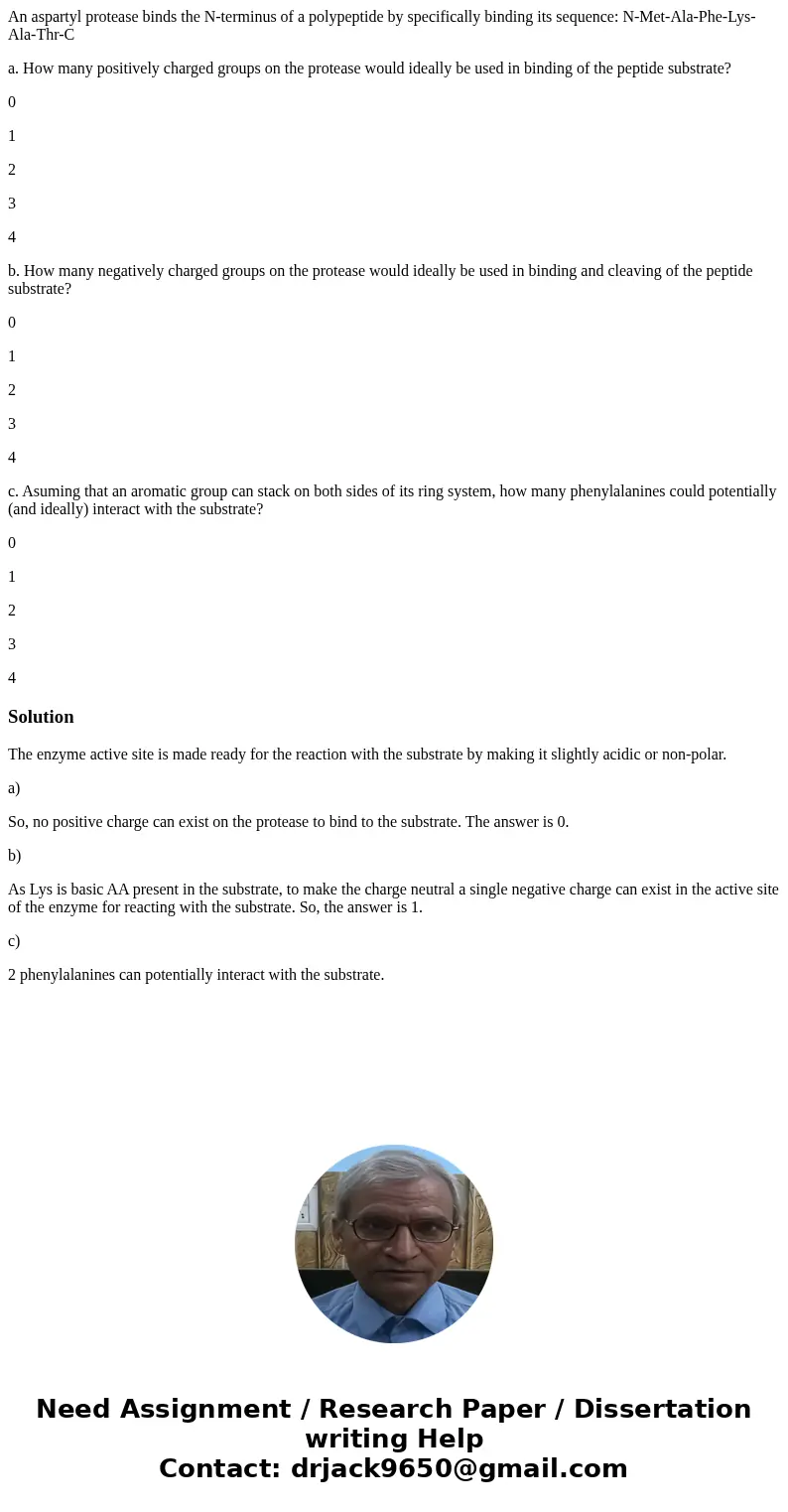An aspartyl protease binds the Nterminus of a polypeptide by
An aspartyl protease binds the N-terminus of a polypeptide by specifically binding its sequence: N-Met-Ala-Phe-Lys-Ala-Thr-C
a. How many positively charged groups on the protease would ideally be used in binding of the peptide substrate?
0
1
2
3
4
b. How many negatively charged groups on the protease would ideally be used in binding and cleaving of the peptide substrate?
0
1
2
3
4
c. Asuming that an aromatic group can stack on both sides of its ring system, how many phenylalanines could potentially (and ideally) interact with the substrate?
0
1
2
3
4
Solution
The enzyme active site is made ready for the reaction with the substrate by making it slightly acidic or non-polar.
a)
So, no positive charge can exist on the protease to bind to the substrate. The answer is 0.
b)
As Lys is basic AA present in the substrate, to make the charge neutral a single negative charge can exist in the active site of the enzyme for reacting with the substrate. So, the answer is 1.
c)
2 phenylalanines can potentially interact with the substrate.

 Homework Sourse
Homework Sourse